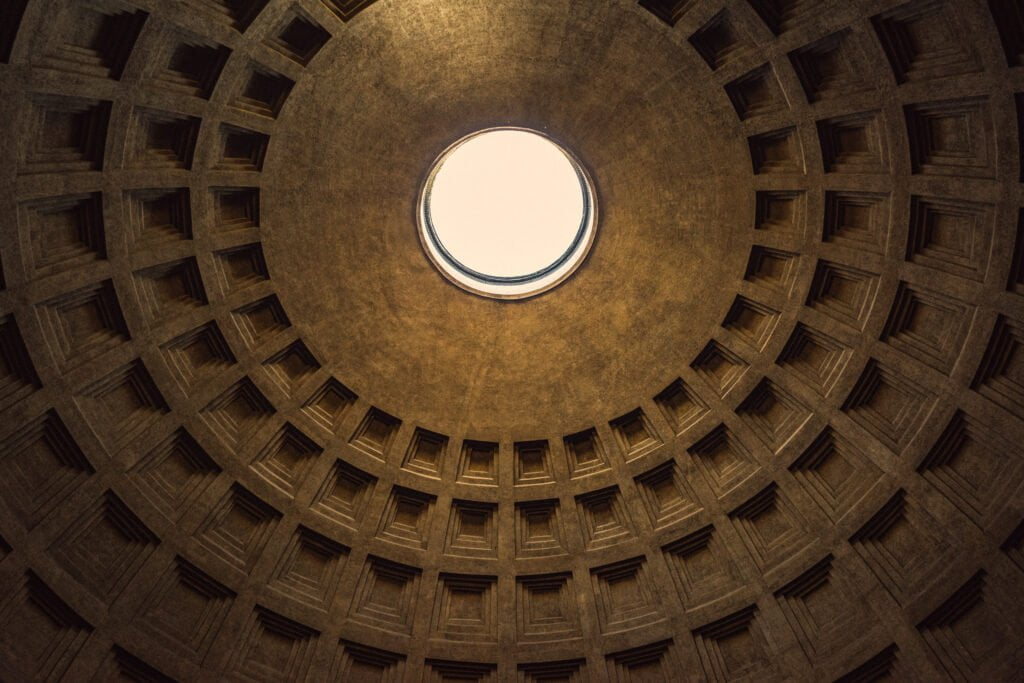The two well-known predictions about black holes today are two. Fine, from inside a black hole you can't escape because the way out is back in time. Second, you can see the entire future of the universe because the time in the universe you left is now like space. Too bad you can't tell anyone.
The idea that we live inside a black hole isn't as crazy as it seems. Black holes deform space and time until their roles are reversed. For anyone who falls into a black hole, the radial dimension, towards the singularity, becomes time and the temporal dimension becomes like space. The basic idea of the theory that the Big Bang would be a black hole (Black Hole Big Bang Theory, or BHBBT) is that matter from a parent universe collapses into a black hole. The singularity of this black hole is at a single point in space compared to anyone in the parent universe. But, due to the reversal of time and space for everyone within the daughter universe, that point in r=0 space becomes their starting point in time, t=0. So what was a singularity in space is now a singularity in time, just like the Big Bang.
This means that any matter that falls from the “parent” universe into a black hole will disappear from that universe and emerge at a starting point in the completely confused “daughter” universe.
How much matter from the "mother" universe would end up in the "daughter" universe? And how much can he finish? Even the whole thing? Can one universe end inside another? The reason an entire universe can be contained within another has to do with the strange way time and space can be warped, stretched, compressed, and twisted. What appeared to be a dead end at the center of a black hole may instead be a passage in the birth of a new universe.
You can have many universes interconnected like this, where mothers give birth to daughters who give birth to more daughters, and so on ad infinitum. So, far from being “old” only 13 billion years, the entire interconnected cosmos may be infinitely old.

The standard Big Bang model
The standard Big Bang (SBB) model of the universe is that the universe, including time, space, and matter, it was born in a single point about 13 billion years ago. From the point of view of general relativity, Einstein's theory of gravity, space itself was compressed to that point. As time passed, space began to expand, taking matter with it as it went. This process would continue today and we know this because when we observe distant galaxies, they are moving away from us. The further away a galaxy is, the faster it moves away from us. This is consistent with a theory of the universe in which space is expanding. The larger the space between two points, the faster they can move apart. The standard example of this is a set of dots on a balloon. Blow up the balloon and all the dots move away.
Where is the center of the universe?
The center of the universe, where the Big Bang happened, is not for us in space, but at a point in time, t = 0, in the Big Bang. The balloon analogy is useful here because the center of the balloon, of course, is not on the balloon. Space, therefore, is like the surface of the balloon with an added dimension, so it is 3 dimensions instead of 2. The past is like the inside of the balloon.
Black holes, however, have their centers at a point in space, r = 0 in coordinates centered on the singularity of the black hole. Therefore, they are fundamentally different from the Big Bang singularity.
So how can we be inside a black hole? Time becomes space
One of the strange features of general relativity is its ability to bend space and time to the point where time and space can switch roles. Intense concentrations of matter can warp space and time in a way that changes the meaning of space and time for different observers. For an observer outside a black hole, called a distant observer, the singularity is at a point in space. For the observer inside the event horizon, however, the singularity is at some point in the time, some time in the future.
The theory that the Big Bang is a black hole, BHBBT, suggests that at least for some types of singularity, once matter reaches it, it enters a new universe in which the time at the singularity is the starting point of that universe.
Imagine you are an ant crawling on a table. As you crawl, go down a slope. The slope gets steeper and steeper until it becomes completely vertical. Suddenly, it ends at a point. This is typical of how black holes are depicted. But now, instead of ending up at that point, beyond this point the space expands again. Passing through that single point you re-emerge in an expanding cone: a new universe perpendicular to the one you left behind.
A black hole as the origin of the universe
BHBBT is a compelling theory that can be rigorously formulated within the limits of Einstein's general theory of relativity. It requires no new physics. It also explains why the Big Bang happened. And on the philosophical level and the anthropic principle it explains in a reassuring way that we were not born "from nothing", but were generated by something else, and perhaps we are in a certain sense infinite.
References:
Smolin, Lee. "Did the universe evolve ?." Classical and Quantum Gravity 9.1 (1992): 173.
Stuckey, WM "The observable universe inside a black hole." American Journal of Physics 62.9 (1994): 788-795.
Easson, Damien A., and Robert H. Brandenberger. "Universe generation from black hole interiors." Journal of High Energy Physics 2001.06 (2001): 024.

